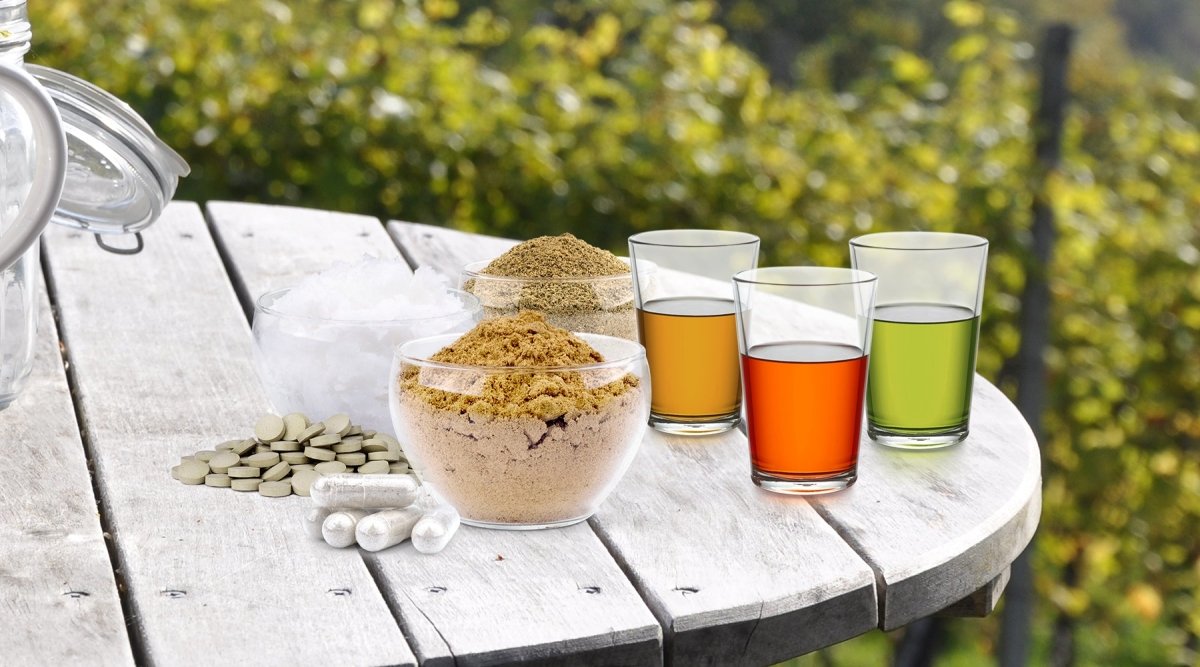As a dog owner, you only want the best for your pet. At the same time, you sometimes don't have much time to prepare your pet's food. That's why you might be asking yourself what a healthy diet can look like that is both quick and easy. Our veterinary practitioner Angelica has some tips for you on what you should look out for when buying dog food to keep your four-legged friend fit and vital.
Fast feeding and still enjoyable for your dog
A wholesome and healthy diet provides your dog with all the important nutrients. The demands are high for all pet owners: the diet should be healthy and wholesome so that the dog is supplied with all essential nutrients. At the same time, preparation should be quick and uncomplicated, as our schedules are often packed and we have less and less time. Your four-legged friend will also enjoy a varied diet - after all, who likes to eat the same thing every day?
So how can all these needs be reconciled? Today we will take a brief look at the different types of food and highlight the advantages and disadvantages. So you can decide for yourself which is the right choice for you and your four-legged friend.
After all, eating is best when your dog enjoys it. You will also enjoy watching his anticipation of the meal and his excitement when expectations are met. There are various ways to keep your four-legged friend's diet simple for you and at the same time look after his well-being. The most important thing is that you familiarize yourself in detail with the different types of food and do not pass the responsibility on to the - often additive-rich - products from ready-made food manufacturers.
Dry food
Dry food is still the most popular form of feeding. This is partly because dog owners are unsure how to feed their four-legged friends properly according to their needs. On the other hand, the advantages of this feeding method are obvious:
Advantages:
● very practical to handle
● easy to store, long shelf life
● easy to transport, e.g. when traveling
● quick to prepare
● inexpensive
● less odorous (a plus for humans)
● flavor variations available
● you can stockpile
One myth circulated by food manufacturers is that dry food prevents or reduces tartar, plaque or dental plaque. However, no study has yet been able to prove this.
There are also some problems that are discussed by experts and that you should consider.
Disadvantages:
● Low moisture content, i.e. your dog needs additional liquid: If your four-legged friend does not drink enough, it can lead to kidney problems, bladder stones and digestive disorders in the long term.
● Not popular with all dogs
● Danger of obesity: If your pet eats larger portions than necessary for its energy requirements, weight gain is not uncommon with dry food.
● Often not available in small portions
● Increased potential to cause allergies or intolerances
Storage:
It is advisable to store opened dry food in a sealable food container. This protects it from humidity as well as from hungry dogs looking for food or possible pests.
Wet food
Wet food is more in tune with a dog's eating nature than the dry variety and is therefore preferred by many four-legged friends. There are also other advantages.
Advantages:
● high moisture content - e.g. also satisfies your pet's need for fluids if they don't drink much
● different varieties available for all stages of your dog's life
● small portions available
● easier to handle
● more smell - a plus for dogs
● more variety than dry food
Disadvantages:
● shorter shelf life after opening
● more expensive
● often unpleasant smell (for humans)
● more waste due to the packaging - here you can switch to wet food in sausage form to do something good for the environment
Storage:
You should store opened cans of wet food in the fridge and use them up relatively quickly. This is particularly important in hot summer temperatures so that the leftover food does not spoil and your dog does not fall ill as a result.
Can I mix dry and wet food?
Mixing dry and wet food is often done in practice, but you should avoid it. Many owners put dry food in the bowl and then drape it with wet food. Although this is well-intentioned, it is not very suitable for the dog. The problem is that both types of food are digested for different lengths of time. This can lead to a fermentation process in your four-legged friend's stomach and intestines, which can lead to stomach problems and sometimes vomiting and diarrhea. This puts additional strain on the stomach and intestines. However, this does not mean that you have to give up a combination of wet and dry food. A good alternative that still creates variety is to feed your pet one food first and then the other at intervals. This way, your pet will be well fed and, above all, won't have any digestive problems.
What you can look out for when buying ready-made food
Ready-made food - whether dry or wet food - is not always healthy for your four-legged friend, even if it does not comply with EU food regulations. Here are some questions you can ask yourself before buying to ensure your pet is getting the most wholesome diet possible:
1. do the ingredients actually come from organic production? Organic means: 95% of all ingredients are organically grown and have been produced without pesticides and factory farming.
2. can you tell from the composition which proteins, grains and nutrients the product really contains? It's worth comparing labels. High-quality pet food lists all ingredients: What meat? How much? Which oils? Which fats? What other plant-based ingredients? Grain and gluten free?
3. is the composition divided into relative amounts by weight or into feed groups? It is best to take a close look here so that you can recognize unnecessary additives.
4. does the product contain sugar or cereals? No dog food needs sugar or grain. Try to avoid such products as a matter of principle.
5. which additives are included? Formed meat, bone meal, attractants and artificial colorings as well as artificial flavors, EC additives and preservatives do not belong in any dog food.
Take some time to look into these points, because high-quality food is essential for the well-being of your four-legged friend.
BARF - the alternative not just for allergy sufferers and puppies
If your four-legged friend suffers from food intolerances or allergies, ready-made food is often out of the question. A special diet is required due to digestive problems or chronic illnesses. The situation is similar when feeding puppies, which have special needs.
For both groups B.A.R.F. (biologically appropriate raw food) is a good alternative for both groups. But this feeding of raw meat, vegetables, bones, fish, fruit and various additives is not only suitable for demanding dogs. The extra time spent is worth it, because this form of dog food contains many vitamins, antioxidants, enzymes, minerals and probiotics that keep your pet fit and healthy. This method also gives you the greatest possible control over his food. Barfeeding is considered the most natural diet for animals.
One myth that persists in this context is that barfing involves a lot of effort and is complicated. Getting fresh meat, vegetables and fruit every day, thinking about what to feed my four-legged friend today - it's very easy to integrate barfing into everyday life. The key lies in the preparation.
You buy large quantities of fruit and vegetables, prepare the mixtures, portion them accordingly and freeze them. This way you have a supply to fall back on. In everyday life, defrost a portion before serving and mix in fresh meat. Fresh meat can easily be kept in the fridge for 2 days, provided you remove it from the plastic wrap - this prevents the development of bacteria that are not good for your dog.
Alternatively, you can also freeze portions of vegetables, fruit and meat directly. After defrosting, add a little oil and herbs - and the healthy meal is ready. Nowadays, meat can be ordered and delivered quickly and easily online. You can also find retailers there who offer ready-to-eat meat. The portions already contain oil and herbs.
The responsibility for your four-legged friend's diet lies in your hands. Even if you don't have much time in your day-to-day life, you should take a quiet minute to look at the different approaches and decide for yourself what is right for you. Home-cooking, barfing, wet or dry food - sometimes variety is the most fun.



